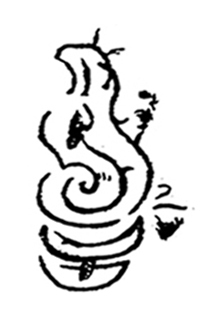
Venad was a medieval kingdom lying between the Western Ghat mountains and the Arabian Sea on the south-western tip of India with its headquarters at the port city of Kollam/Quilon. It was one of the major principalities of Kerala, along with kingdoms of Kannur (Kolathunadu), Kozhikode and Kochi (Perumpadappu) in medieval and early modern period.

Mushika dynasty, also spelled Mushaka, Tamil/Malayalam: Eli or Ezhi, was a minor dynastic power that held sway over the region in and around Mount Ezhi (Ezhimala) in present-day Kerala, south India. The country of the Mushikas, ruled by an ancient lineage of velir-level chieftains of the same name, appears in early historic (pre-Pallava) south India. Early Tami poems contain several references to the exploits of Nannan of Ezhimalai. Nannan was known as a great enemy of the pre-Pallava Chera chieftains. The clan also had matrimonial alliances with the Chera, Pandya and Chola chieftains.
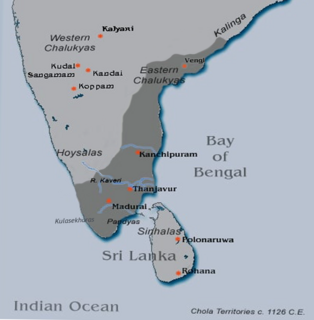
Vikrama Chola, known as Kō Parakēsari Varman, was a 12th-century king of the Chola Empire in southern India. He succeeded his father Kulothunga I to the throne.

Rama Varma, with title Kulasekhara PerumalChakravarthikal, was the last ruler of the Chera Perumal dynasty of medieval Kerala. He was a contemporary to Chola kings Kulottunga I (1070–1120) and Vikrama Chola. Rama Kulaskehara is best known for recovering Kollam-Trivandrum-Nagercoil region from the powerful Chola empire around 1100 AD.

The Alupa also known as Alva was an ancient ruling dynasty of India. The kingdom they ruled was known as Alvakheda Arusasira and its territory spanned the coastal districts of the modern Indian state known as Karnataka. The cultural region of Tulu Nadu was the core of their territory. The Alupas were initially independent but with the dominance of Kadambas from Banavasi, they became feudatory to them. Later they became the vassals of the Chalukyas, Rashtrakutas, Hoysalas with the change in political scenario of Southern India. Their influence over coastal Karnataka lasted for about 1200 years. There is evidence that the Alupas followed the law of matrilineal inheritance (Aliyasantana) since the Alupa king Soyideva was succeeded by his nephew Kulasekhara Bankideva. The legendary king who is credited with introducing matrilineality in Tulu Nadu is named Bhuta Alupa Pandya The name Alva survives as a surname even today among Bunt landlords who are Matrilineal The last Alupa king to have ruled is Kulasekharadeva Alupendradeva whose inscription dated 1444 CE have been found in Mudabidri Jain Basadi.
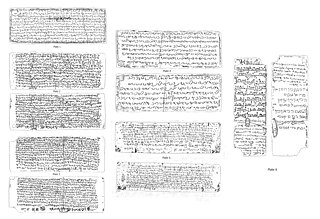
Kollam/Quilon Syrian copper plates, also known as Kollam Tarisappalli copper plates, or Kottayam inscription of Sthanu Ravi, or Tabula Quilonensis record a royal grant issued by the chieftain of Kollam to a Christian merchant magnate in Kerala. The royal charter is engraved in old Malayalam in Vattezhuthu on six copper plates. The document is one of the important historical inscriptions of Kerala, the date of which has been accurately determined.
Jainism, one of the three most ancient Indian religious traditions still in existence, has very small presence (0.01%) in Kerala, in south India. According to the 2011 India Census, Kerala only has around 4500 Jains, most of them in the city of Cochin and in Wayanad district.
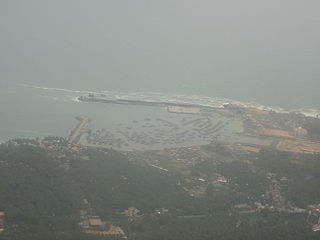
Ay dynasty, also known as Kupaka in medieval period, were an Indian ruling lineage which controlled the south-western tip of the peninsula, from the early historic period up to the medieval period. The clan traditionally held sway over the harbour of Vizhinjam, the fertile region of Nanjinad, and southern parts of the spice-producing Western Ghat mountains.

Rajasekhara, identified with Rama Rajasekhara, was a Chera Perumal ruler of medieval Kerala, south India. Rajasekhara is usually identified by historians with Cheraman Perumal Nayanar, the venerated Shaiva (Nayanar) poet-musician. Two temple records, from Kurumattur, Areacode and Thiruvatruvay, Vazhappally, mention king Rajasekhara.

Thiruvalanjuli is a village in the Kumbakonam taluk of Thanjavur district, Tamil Nadu, India. The village is known for the famous Kabartheeswarar Temple which houses the image of Vellai Vinayagar. It is the suburban region of business city of Kumbakonam.
Kulasekhara is a south Asian male name, used as both given and last name, prevalent in Tamil Nadu, Kerala and Sri Lanka.

Sthanu Ravi Varma, probably known as the Kulasekhara, was the Chera Perumal ruler of Kerala in southern India from 844 to c. 870/71 AD. Sthanu Ravi is often identified with playwright king Kulasekhara Varma, and with Bhakti saint Kulasekhara Alvar.

Thiruvalla copper plates, also known as the Huzur Treasury Plates, are a collection of medieval temple committee resolutions found at the Sreevallabha Temple, Thiruvalla, Kerala. The collection of plates, engraved in old Malayalam language in Vattezhuthu with some Grantha characters, can be dated to 10th and 11th centuries AD.
Mushika-vamsha is a Sanskrit dynastic chronicle composed in 11th century by poet Atula. It narrates the legendary history of the Mushika dynasty, which ruled the northern part of the present-day Kerala state of India. The chronicle moves from mythological beginnings of the founding ancestors to more authentic genealogical history in later sargas.
The Pullur Kodavalam inscription is an early 11th century stone inscription from Pullur, near Kanhangad in Kerala, south India. The old Malayalam inscription in Vattezhuthu script is engraved on a single stone slab in the courtyard of the Pullur Kodavalam Vishnu Temple.
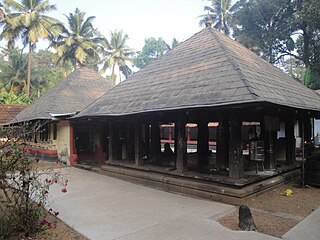
Thiruvatta Mahadeva Temple is an ancient Hindu temple dedicated to Lord Shiva is situated on the banks of the Manimalayar (river) in Thiruvalla of Pathanamthitta District in Kerala state in India. References to this temple is found in Vazhappally inscription relates to the rule of Kodungallur Chera king Rama Rajasekhara and temple at Vazhappally. It is the earliest available epigraphical record mentioning a Kodungallur Chera king and written in Malayalam language. According to folklore, sage Parashurama has installed the idol of Lord Shiva in the Treta Yuga. The temple is a part of the 108 famous Shiva temples in Kerala.
Trichambaram inscription is an 11th century inscription from Trichambaram, near Taliparamba in north Kerala. The old Malayalam inscription in Vattezhuthu script is engraved on two blocks of granite in the base of the central shrine of the Trichambaram Temple.
Goda Ravi was a Chera Perumal king of medieval Kerala, south India.
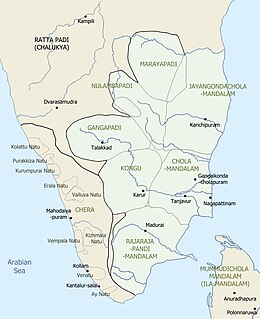
Chera/Perumals of Makotai, also known as the Perumal dynasty of Kerala, or Cheraman Perumal dynasty of Mahodayapuram, were a ruling dynasty in present-day Kerala, south India. Makotai, or Mahodayapuram, the seat of the Cheraman Perumals, is identified with present-day Kodungallur in central Kerala. Initially, their influence appeared limited to the area between present-day Quilon and Quilandy, but later extended to up to Chandragiri river in north Kerala and to Nagercoil in the south.
Kinalur inscription is a lost Jain record from Kinalur, around 30 km north-east of Calicut, in north Kerala. The inscription describes the provisions made by Arappan Kunchi, the chieftain of Kurumpurai-nadu, for "Kunavaynallur Vijayaragishwaram Jain Temple".













